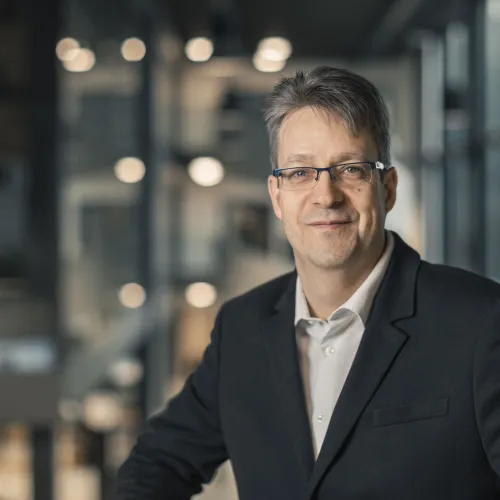It’s difficult to imagine anything that couldn’t be taken care of with a phone or other digital device – or a problem that hasn't been solved with software. Society is digitalized to the core and deeply in need of a green transition, because the information and communication technology (ICT) sector releases nearly as much carbon dioxide emissions as the aviation industry. Emissions have already been mitigated by different means, such as the use of renewable electricity, but a great deal of work remains to be done.
“The advantages of green ICT are enormous, and the sector has unique opportunities to support the sustainability actions of other fields, such as the construction and transportation sectors. The positive impact of ICT is far-reaching, and that’s why we need a green transition in this field specifically,” explains Jari Porras, professor of software engineering at LUT.
The increasing use of digital devices and software threatens to double the carbon dioxide emissions of the ICT industry. That’s why every level of the industry’s operation needs sustainable practices, including the use of fewer resources, building more durable devices that pollute less, and developing the recycling of devices.
”In software processes, sustainability can be furthered by, for instance, taking into consideration the software's sustainable energy consumption,” Porras says.
Coding should be both fast and efficient
Software engineering and coding have changed significantly since their early years. Back in the day, the processing capacity and memory were limited, which set certain requirements for the efficiency of coding. However, the gradual increase in processing capacity has given coders carte blanche like never before.
“Today's programmers aren’t used to living in a world with restrictions. In Finland, code is often produced as fast as possible in order to get different versions out quickly. However, the software isn't as efficient as it could be.”
Porras estimates that in recent years, dialogue on more efficient and therefore more eco-friendly software has gained momentum. Nevertheless, the matter would call for significant investments, because the engineering of efficient software requires time and, consequently, human resources.
What does green digitalization mean?
- Devices are built resource-efficiently without wasting raw material.
- Devices run energy-efficiently, which means they consume less energy.
- Devices are durable, which means there’s no immediate need to buy a new one.
- Old devices are recycled and their parts reused.
- Software works efficiently: it takes up very little memory and processing capacity, which saves energy and increases the device’s life span.
- Systems and software solutions are long-lasting and easily updatable.
Source: Jari Porras, LUT University’s professor of software engineering

Responsible software engineering takes societal impacts into account
Sustainable ICT encompasses much more than just environmental issues. Porras has been involved in an international working group that examines the sustainability of software solutions from five perspectives: environment, economic importance, technical durability, and social impact at the collective and individual levels.
“These days, we should examine those dimensions combined. The aim is, for instance, to develop systems and software solutions that are long-lasting and easily updatable. Meanwhile, we need to take into account how the transfer of services such as banking and taxation to online platforms affects people. For example, the elderly or people with low incomes may not have similar access to devices required for the services, meaning they risk exclusion.”
Porras emphasizes that investments in responsible software development cannot be left solely to software development enterprises. Everyone should be involved in the development – from the commissioner of the product to its end user.
“If the software developer is the only one dealing with the responsibility aspects, all the related costs will be borne by only one party. Moreover, software users will not be motivated to use the software in the most sustainable way possible. In contrast, if sustainability is a shared concern, all parties will be aware of their own role and be prompted to act sustainably,” he analyzes.
LUT University educates sustainable software engineering professionals
LUT University teaches sustainable software engineering in its software engineering studies. As a result, LUT graduates are able to take sustainability impacts into consideration in their work. Further, Porras and his team are involved in a number of projects that aim to increase awareness of sustainable software engineering and provide related training to businesses.
“Businesses are showing strong interest in sustainable ICT but often lack time to implement it. We need to increase awareness so that related goals can be successfully achieved in practice. It’s important for every member of an organization to understand what these changes mean and how they influence their work,” Porras relates.
A successful green transition requires systematic planning and open discussion on what’s being done and what the effects are on everyday work. To measure the outcomes of sustainability actions successfully, organizations should examine their own carbon footprint and their industry's impact on the environment and take possible positive impacts on other industries into account.
More information:






